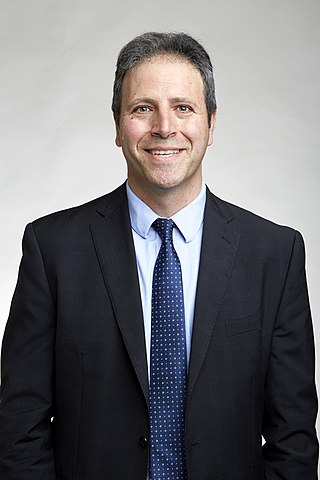
Polymer banknotes are banknotes made from a synthetic polymer such as biaxially oriented polypropylene (BOPP). Such notes incorporate many security features not available in paper banknotes, including the use of metameric inks. Polymer banknotes last significantly longer than paper notes, causing a decrease in environmental impact and a reduced cost of production and replacement. Modern polymer banknotes were first developed by the Reserve Bank of Australia (RBA), Commonwealth Scientific and Industrial Research Organisation (CSIRO) and The University of Melbourne. They were first issued as currency in Australia during 1988 ; by 1996, the Australian dollar was switched completely to polymer banknotes. Romania was the first country in Europe to issue a plastic note in 1999 and became the third country after Australia and New Zealand to fully convert to polymer by 2003.

Reversible addition−fragmentation chain-transfer or RAFT polymerization is one of several kinds of reversible-deactivation radical polymerization. It makes use of a chain-transfer agent (CTA) in the form of a thiocarbonylthio compound to afford control over the generated molecular weight and polydispersity during a free-radical polymerization. Discovered at the Commonwealth Scientific and Industrial Research Organisation (CSIRO) of Australia in 1998, RAFT polymerization is one of several living or controlled radical polymerization techniques, others being atom transfer radical polymerization (ATRP) and nitroxide-mediated polymerization (NMP), etc. RAFT polymerization uses thiocarbonylthio compounds, such as dithioesters, thiocarbamates, and xanthates, to mediate the polymerization via a reversible chain-transfer process. As with other controlled radical polymerization techniques, RAFT polymerizations can be performed under conditions that favor low dispersity and a pre-chosen molecular weight. RAFT polymerization can be used to design polymers of complex architectures, such as linear block copolymers, comb-like, star, brush polymers, dendrimers and cross-linked networks.
The Royal Australian Chemical Institute (RACI) is both the qualifying body in Australia for professional chemists and a learned society promoting the science and practice of chemistry in all its branches. The RACI hosts conferences, seminars and workshops. It is the professional body for chemistry in Australia, with the ability to award the status of Chartered Chemist (CChem) to suitably qualified candidates.
Note Printing Australia (NPA) is a wholly owned subsidiary of the Reserve Bank of Australia (RBA) that produces banknotes and passports. It was corporatised in July 1998 and is located in Craigieburn, Melbourne. NPA has its origins as a subsidiary of the Commonwealth Bank and was established in 1913 to print banknotes for Australia. After printing paper banknotes for 75 years, NPA introduced the first polymer banknote technology in 1988. NPA print banknotes for several other countries as well as Australia due to the high standards of durability and difficulty of counterfeiting.

Krzysztof "Kris" Matyjaszewski is a Polish-American chemist. He is the J.C. Warner Professor of the Natural Sciences at the Carnegie Mellon University Matyjaszewski is best known for the discovery of atom transfer radical polymerization (ATRP), a novel method of polymer synthesis that has revolutionized the way macromolecules are made.
The Ollé Prize is an Australian chemistry award administered by the Royal Australian Chemical Institute (RACI). Archibald Ollé was very active in the chemical and scientific life of New South Wales (NSW) in the first 40 years of the twentieth century, and his wife left a bequest to RACI, NSW Branch, to establish an annual prize in his name. It is awarded to a member of the Institute who submits the "best treatise, writing or paper" on any subject relevant to the Institute's interests. The Ollé Prize from the RACI is distinct and unrelated to a similarly named prize from the Royal Society of NSW.

Andrew Bruce Holmes is an Australian and British senior research chemist and professor at the Bio21 Institute, Melbourne, Australia, and the past President of the Australian Academy of Science. His research interests lie in the synthesis of biologically-active natural products and optoelectronic polymers.
Michelle Louise Coote FRSC FAA is an Australian polymer chemist. She has published extensively in the fields of polymer chemistry, radical chemistry and computational quantum chemistry. She is an Australian Research Council (ARC) Future Fellow, Fellow of the Royal Society of Chemistry (FRSC) and Fellow of the Australian Academy of Science (FAA).
Martina Heide Stenzel is a Professor in the Department of Chemistry at the University of New South Wales (UNSW). She is also a Royal Australian Chemical Institute (RACI) University Ambassador. She became editor for the Australian Journal of Chemistry in 2008 and has served as Scientific Editor and as of 2021, as Editorial Board Chair of RSC Materials Horizons.
Graeme Moad is an Australian polymer chemist.
Traian V. Chirilă is a Romanian-Australian polymer and organic chemist who is the inventor of AlphaCor, an artificial cornea in current clinical use throughout the world.

Eugenia Kumacheva is a University Professor and Distinguished Professor of Chemistry at the University of Toronto. Her research interests span across the fields of fundamental and applied polymers science, nanotechnology, microfluidics, and interface chemistry. She was awarded the L'Oréal-UNESCO Awards for Women in Science in 2008 "for the design and development of new materials with many applications including targeted drug delivery for cancer treatments and materials for high density optical data storage". In 2011, she published a book on the Microfluidic Reactors for Polymer Particles co-authored with Piotr Garstecki. She is Canadian Research Chair in Advanced Polymer Materials. She is Fellow of the Royal Society (FRS) and a Fellow of the Royal Society of Canada (FRSC).
Richard Robson is a Professor of Chemistry at the University of Melbourne. Robson has published over 200 articles, specialising in coordination polymers, particularly metal-organic frameworks. He has been described as "a pioneer in crystal engineering involving transition metals".
Denis Oswald Jordan AO FAA FRACI was an Anglo-Australian chemist with a distinguished career as a researcher and lecturer in Chemistry at both University College Nottingham (1940–53) and the University of Adelaide, where he was Angas Professor of Chemistry from 1958 to 1982. Jordan also served as president of Australian Institute of Nuclear Science and Engineering from 1958 to 1962, and Royal Australian Chemical Institute from 1978 to 1979.

Margaret Mary Sheil is an Australian academic and the Vice Chancellor and President of Queensland University of Technology.
Thang Hoa San is an Australian chemist of Chinese-Vietnamese background.

Francesco Caruso is Melbourne Laureate Professor and National Health and Medical Research Council (NHMRC) Senior Principal Research Fellow in the School of Chemical and Biomolecular Engineering at the University of Melbourne, Australia. Caruso is deputy director of the Australian Research Council (ARC) Centre of Excellence in Convergent Bio-Nanoscience and Technology.

Ezio Rizzardo is a polymer chemist at the Australian research agency CSIRO.
Anita J. Hill is an Australian researcher in materials and process engineering. She is a former Chief Scientist of the Commonwealth Scientific and Industrial Research Organisation (CSIRO), and the current Executive Director of Future Industries at CSIRO. Her research focuses on the transport of atoms, ions and small molecules in condensed matter, notably using positron annihilation spectroscopy.
Stefan A. F. Bon is a Professor of Chemical Engineering in the department of Chemistry at the University of Warwick, United Kingdom. His research considers polymer-based colloids. He is a Fellow of the International Union of Pure and Applied Chemistry, an elected member of the International Polymer Colloids Group (IPCG), and member of the physical Newton international fellowship committee, and served as the Royal Society of Chemistry Outreach Lecturer in 2015-2016.








